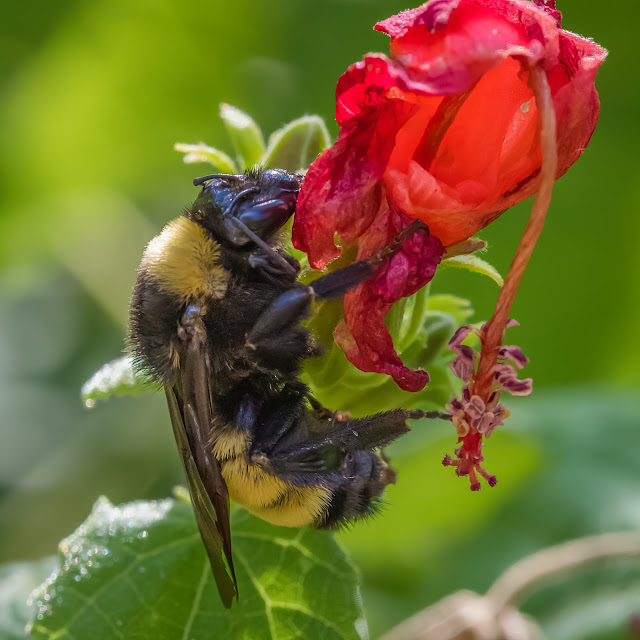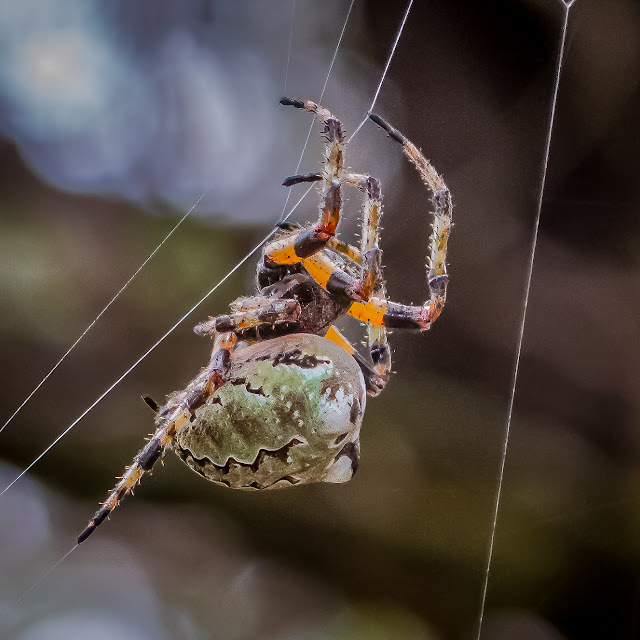 |
| Cold winter temperatures cause many animals to rely on different forms of hibernation. |
As fall turns to winter, many animals begin to alter their patterns as the days become shorter, temperatures turn colder, and food becomes scarce. Depending on the species and their environment, there are several strategies that different animals can use to overwinter. Current thinking is that these strategies are not necessarily distinctly separate, but rather lie along a single spectrum.
True hibernation or dormancy is a state of nearly complete reduced activity defined by a lower body temperature and metabolic rate. A loud noise or movement won’t wake an animal in this state. However, not all animals undergo a true hibernation, especially in warmer climates areas like central Texas. Native bumblebees are an example of true hibernators in our area, as they seek shelter in a hole in the soil, under leaf litter, or in hollow plant stems.
 |
| Native bumblebees are true winter hibernators in Central Texas. |
Brumation is another hibernation-like state exhibited by several cold-blooded reptiles and amphibians such as snakes, lizards, turtles, and fish. This state can last for months and is triggered by colder temperatures and shorter days. These animals will den in rock crevices or dirt burrows, sometimes alone, but often in groups as in the case of garter snakes. While their body temperature, heart rate, and respiratory rates are greatly reduced, some animals in this state may awaken periodically to drink water.
 |
| In winter, Black-necked Garter Snakes often den in groups. |
 |
| This Green Anole came out of brumation on a warmer winter day. |
Not as deep as hibernation, topor is a state that can last for several days or weeks. This light hibernation lasts for short periods of time, allowing animals to wake up on warmer winter days. Such is the case for ground squirrel species such as the Rock Squirrel. Some bird species, such as hummingbirds, go into torpor nearly every night to conserve energy, and can even enter a torpid state during colder days.
 |
| Rock Squirrels enter a state of torpor during the colder winter months. |
While there are different types of hibernation strategies, hibernation states can also be categorized by the factors that induce that state. Facultative hibernation in animals is caused by environmental conditions such as lack of food, short daylight hours, cold temperatures, or a combination of these stressors. This can induce short or longer periods of topor throughout the colder season. Obligate hibernation applies to animals that hibernate spontaneously every year for long or short periods, regardless of temperature or food supply.
Most animals build up fat reserves in the fall to survive the colder winter periods in which they are dormant or less active. However, climate change may disrupt these patterns, as drier summers, warmer autumns, and long-standing droughts can lead to lower food production. This may cause animals to enter hibernation states without the stored calories they need, and emerge early from hibernation hungry for food that is not yet available. These types of timing mismatches will become more prevalent as our planet warms, disrupting the rhythms of nature’s nap time.











































